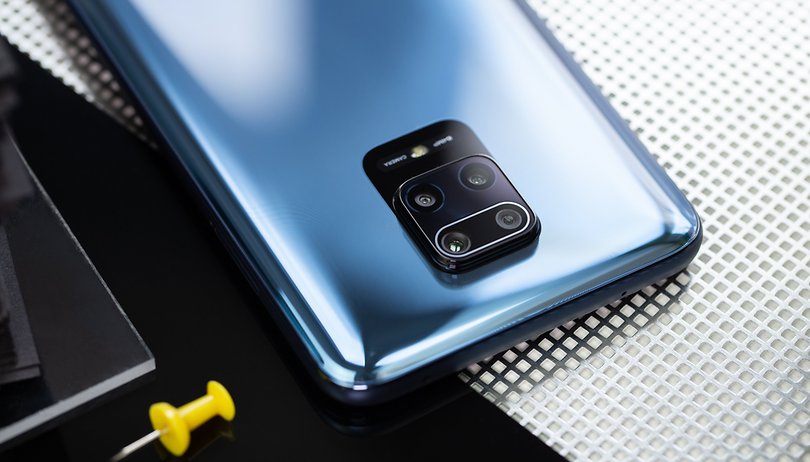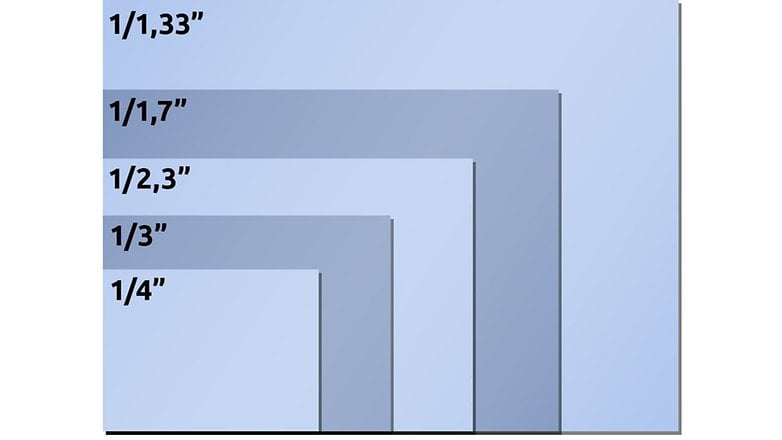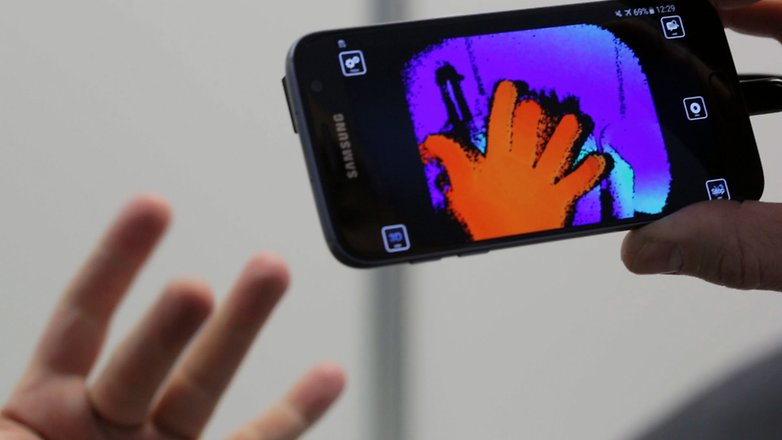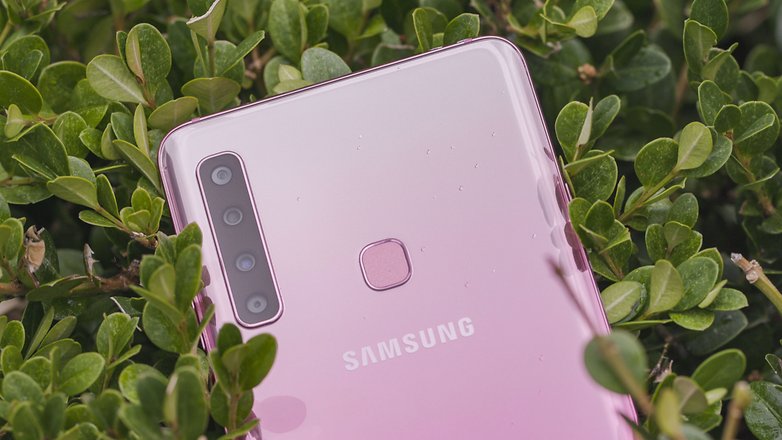The ultimate smartphone camera buying guide


Nowadays, smartphones no longer come with just one camera, but a whole bunch of lenses littered on both the front and back. The question is this: how do you find a smartphone with a good or fantastic camera? Get this question answered in our ultimate guide to the ultimate smartphone cameras!
According to Statista, between 2010 and 2020, smartphone sales figures rose from under 300 million to over 1.5 billion devices per year. During the same period, the digital camera market collapsed dramatically. CIPA claimed: Once, over 120 million units were sold annually, where there is only approximately one-tenth of the volume today, with user theimpossiblesalad summarising this on Reddit via an impressive graph.
Having a camera is simply not the same as a good camera. We'll show you what features you should consider when buying a smartphone should you want to pick up a handset that delivers good picture quality - and possibly even put your old digital camera to rest sooner rather than later.

Contents:
For each important point, we would like to give you a rough overview in this article. What does this characteristic actually mean? And is it important to have that in order for a smartphone to be equipped with a good camera? For the more complex topics, you will be able to read up on them in separate articles in their respective sections.
1. Image sensors
The image sensor is one of the most important parts of a smartphone camera - and is decisive for the image quality. If there is one factor in a cell phone's datasheet that indicates a good camera, it is the built-in sensor.
1.1 Size matters
Out of all the characteristics of a sensor, size is the most important when it comes to delivering stunning image quality. A large sensor is capable of capturing a lot of light. The more light that it captures, the more data is made available to the sensor. Additional data translates to more accurate results and fewer errors, which are particularly noticeable in the form of image noise.
When it comes to low light conditions, having a sufficient sensor area is important to be able to generate noise-free images. We are all familiar with noisy low-light images. But how do you even compare two sensors with each other - especially in view of the lack of information in smartphone specification sheets?

The smaller the number below the fraction, the larger the sensor. 1/1.33 inch is larger than 1/2.3 inch, which in turn is larger than 1/4.4 inch. The largest sensors are used by the manufacturers in the main cameras, as these tend to be the most commonly used.
Comparison of different cameras
| Camera | Image sensor | Sensor format | Sensor area |
|---|---|---|---|
| Realme X3 Superzoom - macro camera | unknown | approx. 1/5 inch | 6-7 mm2 |
| Realme X3 Superzoom - Tele camera | OmniVision OV08A10 | 1/4.4 inch | 8.3 mm2 |
| Google Pixel 4 - Main camera | Sony IMX363 | 1/2.55 inch | 23 mm2 |
| Samsung Galaxy S20 Ultra - Tele camera | Sony IMX586 | 1/2.0 inch | 31 mm2 |
| Samsung Galaxy S20 Ultra - main camera | Samsung Isocell HM1 | 1/1.33 inch | 76 mm2 |
| Canon EOS 5D Mark IV | unknown | Full size | 860 mm2 |
In recent years, the algorithms of smartphone manufacturers have improved dramatically. The Google Pixel 4, for example, has been able to keep up while using the comparatively outdated and small Sony IMX363. Read the following article to find out where the inane measurement specifications for image sensors come from and other details about image sensors.
- TL;DR: The larger the image sensors, the better the image quality.
- Read more: Exmor, Isocell & Co: Why smartphone image sensors are so important!
1.2 Megapixels and pixel size
Another advantage of large sensors is this: They have a lot of space to store many pixels. One thing is for sure though: 100-megapixels does not necessarily translate to a superior image compared to 10-megapixels. However, under ideal conditions, a 100-megapixel photo has of course, more details than a 10-megapixel photo. In order to be able to estimate now whether a certain resolution is reasonable, taking a look at the pixel size helps.
Pixel sizes of different cameras in comparison
| Camera | Resolution | Sensor format | Pixel size | Pixel area |
|---|---|---|---|---|
| Google Pixel 4 - Main Camera | 12.2 megapixels | 1/2.55 inch | 1.4 µm | 1.96 µm2 |
| Samsung Galaxy S20 Ultra - Main camera | 108 megapixels | 1/1,33 inch | 0,8 µm | 0.64 µm2 |
| Samsung Galaxy S20 Ultra - main camera1 | 12 megapixels | 1/1,33 inch | 2.4 µm | 5,76 µm2 |
| Samsung Galaxy S20 Ultra - Tele camera | 48 megapixels | 1/2.0 inch | 0,8 µm | 0.64 µm2 |
| Samsung Galaxy S20 Ultra - Tele camera2 | 12 megapixels | 1/2.0 inch | 1.6 µm | 2.56 µm2 |
| Realme X3 Superzoom - Tele camera | 8 megapixels | 1/4.4 inch | 1.0 µm | 1.00 µm2 |
| Realme X3 Superzoom - Macro camera | 2 megapixels | approx. 1/5 inch | 1.75 µm | 3.06 µm2 |
| Canon EOS 5D Mark IV | 31.7 megapixels | Full size | 5.4 µm | 29.2 µm2 |
1In 12-megapixel mode ("Nonacell") 2In 12-megapixel mode ("QuadPixel")
As a rule of thumb, however, in the year 2020:
- The full resolution up to about 1.0-micron size can be used in daylight for the best results. The really presentable photos tend to happen only in smaller formats. You can forget about capturing night shots with this.
- From 1,4 micron size or larger, you can use the full resolution in daylight. Night shots are usually only useful in smaller formats and require special night modes that are only suitable for still subjects.
- Dynamic shots in the low-light range require a different order of magnitude, starting with the 3 to 4 microns that you find in large-sensor dedicated cameras.
Of course, the boundaries are fluid, and as already mentioned, algorithms play an enormously important role. But we will come back to this later in the software section. However, many modern sensors with their enormous pixel numbers have more tricks up their sleeve than just throwing in additional details. This brings us to the next segment in 1.3.
- TL;DR: Many megapixels will display more details as long as the pixels are not too small
- Read more: Is the 108-megapixel camera in the Xiaomi Mi Note 10 irrelevant?
1.3 Pixel cluster, autofocus & others
Apart from the potential for minute details at the right size, extremely high-resolution sensors have an even more exciting feature: the many pixels on the sensor are clustered. With Sony this is called quad pixel, with Samsung it is called Tetracell (four) or Nonacell (nine), depending on the cluster size.

While quad-pixel or Tetracell sensors actually have as many light sensors as pixels, the number of color filters in the Bayer matrix above the sensor is reduced by a factor of four. So the common Sony IMX586 with its 48-megapixels has only 12 "colored" megapixels (and even those only by demosaicing). This may be a disadvantage in color resolution, but in practice, it doesn't play such a big role.
By "interconnecting" these adjacent pixels, their area now becomes larger - and the "quality" per pixel increases. The 48-megapixel sensor in 12-megapixel mode thus achieves a respectable 1.6-micron pixel size. Samsung's Isocell HM1 even condenses 108- to 12-megapixels.

So why this trick? On the one hand, more megapixels on the datasheet sound really great. On the other hand, there are exciting tricks that involve the autofocus feature. Some sensors not only have several pixels under a color filter, but also under a microlens, which Sony calls 2x1-OCL or 2x2-OCL, depending on whether two or four pixels are under one lens.

This trick turns every single pixel on the sensor into a PDAF autofocus sensor. The result is impressive, and the IMX689 in the Oppo Find X2 Pro really knocked my socks off in our camera review.
The first PDAF autofocus systems integrated into image sensors still required special pixels, which were then only responsible for the autofocus. The blind spots thus created in the sensor had to be filled up by the image processing of the smartphone.
- TL;DR: It's worth taking a look at sensor technology: often great features like the incredibly fast autofocus in the Oppo Find X2 Pro are stashed away here. You can always find such details in our reviews.
1.4 ISO sensitivity
After various manufacturers have in recent years started to proudly list down particularly high ISO sensitivities in their specification sheets, there is only one thing to be said here: This is pure hogwash.
Simply put, the ISO sensitivity of a camera can be compared to a brightness control whose upper end can be set arbitrarily. The meaningfulness of this is approximately the same as the maximum speed on the speedometer scale in your car. Even a 360 km/h speedometer does not make a VW Golf a Bugatti.

- TLl;DR: You can safely ignore information about ISO sensitivity when buying a smartphone
2. Lenses
The lens of a camera ensures that the light reaches the sensor in the first place. Like the size of the sensor, the lens determines how much light the camera system can capture. In addition, the lenses are responsible for the angle of view, zoom & others, which we would like to take a closer look at here as well.
2.1 From Ultra-Wide-Angle to Telezoom
As an introduction, a rough classification of focal lengths and designations:
- Ultra wide-angle ("0.5x"): The ultra-wide-angle describes focal lengths below 20 millimeters for smartphones - or angles of view above 90 degrees. The ultra-wide-angle is perfect for panoramic photos.
- Wide-angle ("1x"): This is the range of the main camera of your smartphone, which typically has a focal length of about 25 millimeters. You all know what that looks like.
- Telephoto zoom camera ( 2x and more): Everything from 50 millimeters falls into the "Telezoom" range. Several smartphones now have several telephoto zoom cameras to increase flexibility.

2.2 Focal length
The focal length in the 35 mm equivalent is a size comparable across all cameras to describe a certain magnification. In most cases, the addition "in 35mm equivalent" is omitted in specification sheets in favor of readability. A KB focal length always correlates to a certain angle of view.
Focal lengths and their angles of view
| 35mm equivalent focal length | Angle of view in diagonal measurement |
|---|---|
| 12 millimeters | 122.0 degrees |
| 24 millimeters | 84.1 degrees |
| 50 millimeters | 46.8 degrees |
| 85 millimeters | 28.6 degrees |
| 105 millimeters | 23.3 degrees |
For you as a prospective customer, this means one thing: You know exactly what magnification you get when you buy a smartphone with a 120-degree ultra-wide-angle. At least, that is what you should get if the manufacturer doesn't cheat, right Oppo?
In order to be able to make something that jives with the values, some practical experience is helpful. 120 degrees or 12 millimeters are extremely wide-angle figures. 24 millimeters is what you are familiar with from the main cameras of your smartphones. 50 millimeters is about the same as your regular vision and is good for portraits - just like 85 millimeters. Everything else above this is considered as luxury, ensuring that you do not get cheated when you are considering your next purchase.
Also, ensure that there are no big holes between the different focal lengths in your smartphone - because between the optical available focal lengths that your phone has to zoom digitally, which translates to a certain loss of quality.
Basically: If you want to take good photos at a certain magnification, your smartphone should support this magnification as well as possible with a camera module of the corresponding focal length. There are exceptions to this rule which can be read in our article about the 100x zoom fairy tale in the link below.
- TL;DR: The larger the difference in focal lengths, the better. Pay close attention to the sensors and lenses to be able to estimate the final quality.
- Read more: The 100x zoom fairytale: Smartphone focal lengths and optical zoom explained
2.3 Zoom
Don't be blinded by fantasy values like 100x, 60x or 30x. These values do not have a physical basis to stand on in smartphones, but were at best something conjured up by marketing and product managers. The decisive factor for the image quality of a smartphone at high focal lengths is the telephoto camera. Here you have to look at the real focal length on the one hand, and at the sensor on the other. For example:
- The telephoto camera in the Galaxy S20 Ultra has a focal length of 102 millimeters. Since Samsung uses a large 1/2-inch sensor here, the image quality will be pretty good at this magnification. The digital zoom also has additional mileage courtesy of the 48-megapixel resolution.
- The Xiaomi Mi Note 10, on the other hand, has a 1/4.4-inch sensor with just a quarter of the surface area for a similar focal length. The 8-megapixels offer little bang when it comes to digital zoom.
It's no surprise then that the two smartphones end up with vastly differing quality when it comes to telephoto zoom image quality.

Everything that manufacturers flog to the masses with terms such as Hybrid Zoom, Hybrid Optical Zoom, or something similar is at the end of the day, nothing but regular digital zoom. The current state of affairs is still as valid today:
- TL;DR: You can ignore zoom specifications like "100x". Instead, take a look at the image sensors and lenses or focal lengths of the various camera modules.
2.4 Aperture
F2.2, F1.8, F1.5 - the aperture has been a popular marketing tool in recent years. This went so far that Samsung massively sacrificed image quality in favor of the lowest possible F-number. But that's the way it is: The physics are common, and fast lenses place extremely high demands on processing and construction quality if the final image quality is not to suffer.
Under normal circumstances, a mechanical aperture on the Galaxy S9 finally reduced the aperture ratio from F1.5 to F2.4 in favor of the image quality. The edge of the lens, which is responsible for the higher light intensity and the loss of image quality, was covered by a piece of plastic, but the main thing is that you can write F1.5 on the specifications sheet.
Whether a smartphone has a maximum aperture ratio of F1.5 or F1.8 is not so relevant with regard to the amount of light. Between F1.5 and F1.8 there is about half an aperture, which is not even 50% more light. As a reminder, a 1/1.33-inch sensor has more than twice the area size of a 1/2-inch sensor. So the leverage here is much bigger.

But where the aperture plays an important role is with telephoto cameras. At high focal lengths, it is extremely difficult to achieve large apertures - and so you often find low-light lenses with f-stops of F3.5 or higher. In this order of magnitude, a drop in luminous intensity certainly plays a role. At F3.5 there is only half as much light left as at F2.5. In connection with the mostly tiny image sensors of telephoto cameras, it is almost always inevitable to end up with bad image quality.
If you want to read more about the aperture in the smartphone cameras, I recommend the following linked article.
- TL;DR: You can ignore small differences in aperture value. With telephoto cameras, however, the differences are clear in certain places - and it's worth a look.
- Read more: Smartphone camera aperture guide: What does F1.7 actually do?
2.5 Lens elements
The number of lens elements (and lens groups) appears sporadically from time to time in connection with smartphones, but has not yet established itself in specification sheets. Nevertheless, I would like to mention them briefly. The number of lens elements and lens groups says about as much as the number of gearwheels in a transmission. Having more does not necessarily translate to better performance.
- TL;DR: You can ignore information about lens elements (and lens groups).
3. Special cameras
From ToF and LiDAR, to Bokeh and Macro: Smartphones have all kinds of special cameras. What do you really need? Read all about it in the following paragraphs.
3.1 Time-of-Flight (ToF)
Whether they are called Time-of-Flight or ToF like most Android smartphones or LiDAR like Apple devices: Active depth cameras are found on more and more smartphones and tablets. While manufacturers usually advertise the exotic camera modules with revolutionary AR features or better bokeh effects, the actual, noticeable advantages are still rather small.

Our recommendation is, therefore: Do not base your purchase decision on the presence of ToF or LiDAR sensors. We have been waiting for the breakthrough since Google Tango, and not much has happened yet. You can read more about the technology in our article with video concerning the ToF camera in the Lenovo Phab 2 Pro, the first smartphone with a time-of-flight camera at the time.
- TL;DR: ToF cameras currently do not offer a decisive advantage.
- Read on: Google Tango: ToF camera in the Lenovo Phab 2 Pro
3.2 Bokeh camera
Bokeh or depth sensors are particularly popular in mid-range and entry-level smartphones. This is understandable, because for manufacturers, they happen to be a cheap way to "upgrade" a smartphone by throwing in additional cameras. The most used 2-megapixel sensors are available for free by China-branded smartphones. And hey, isn't having quad cameras better than triple?
Why not just use the 8-megapixel ultra-wide-angle camera installed right next to the lame 2-megapixel bokeh sensor? Not a popular question in interviews, you can safely ignore bokeh sensors. If there's anything on the planet they do better, it's the manufacturers' specification sheets.

- TL;DR: Bokeh cameras are when performing creative shooting if your smartphone doesn't have an ultra-wide-angle camera. Otherwise, they only serve to populate the specifications sheet.
- Read more: Beautiful blur for smartphone portraits: How the bokeh effects work
3.3 Macro camera
Macro cameras have been another trend in the past few months. However, the foundation is similarly shaky as that of bokeh sensors. The 2-megapixel mini-sensors with their notoriously low resolution are rarely superior in terms of image quality to the results that can be obtained from a reasonable main camera using digital zoom.

In contrast to the bokeh sensor, macro cameras actually have an advantage. The notoriously tiny sensors have quite a large depth of field, so that you don't have to be so careful when taking pictures. And the separately available macro mode in corresponding smartphones invites you to discover the world around in greater detail.
- TL;DR: All the macro cameras I know of are at best, a nice gimmick. If a manufacturer installs a large-sensor macro camera with high resolution, I might change my mind.
4. Software
Whether it is image processing algorithms or the camera app itself: the software plays an important role in a good smartphone camera.
Point one is user-friendliness. The camera apps of some manufacturers are kept very simple, while others offer countless functions and setting options. What is the right one for you? The only thing that helps here: Try it out for yourself!
The same applies to the various special modes: If you take a lot of pictures in the dark, you should choose a smartphone with good night mode. Some phones like the Google Pixel 4 or the Realme X3 Superzoom even offer a star mode. Other devices offer soft water, light painting, or super slow motion modes.

Point two is, the algorithms that capture a photo and work with the sensor data. Here, an interesting development took shape when Google presented its first Pixel smartphone. From that point on, Google decoupled the camera app from Android - and every manufacturer was forced to develop its own camera app.
For big manufacturers like Samsung, Apple, or Huawei, this was not a problem. Within a few months, Google's camera team had more or less caught up with their rivals' lead. But for smaller manufacturers such as HTC, OnePlus, or LG, they had to struggle quite a bit to develop their own camera apps, at least at the beginning.
TL;DR: Large manufacturers with large development capacities not only find it easier to incorporate a wide range of functions in their camera apps, but can also afford better algorithms. The differences in quality are especially noticeable in the various night modes.
5. Review reports
On pretty much every website about smartphones you can find reviews of their cameras - and this is also the case here with us. But what actually makes a good review?
For every ten smartphone testers out there, there are probably 15 opinions about which review method is the right one. Lab? Or rather, practice? Comparisons? At this point, I would simply like to share my experiences.
I have reviewed smartphones and also "real" cameras in test labs of former employers and photographed endless review charts. Yes: The results are exciting, for example to precisely quantify the loss of resolution during digital zoom or to check improvements through updates.

But a lot of things fall through the cracks in laboratory tests. The very obvious image processing errors found in the first smartphones with Samsung's 108-megapixel sensors, for example, do not occur at all in static motifs. Even annoying shutter delays or regular crashes of the camera app only become apparent after extensive practical testing.
It is important for a good review report to be as varied as possible. Smartphones nowadays have an enormous number of different cameras and settings. Have the most important ones been tested - and under different conditions? And most importantly, can you always follow the reviewer's findings with sample shots?
A great way to eliminate the reviewers and their opinions as unknowns from the equation is to perform comparative tests. Here, you can directly judge how a certain smartphone compares to another device - maybe even to a smartphone that you know and use yourself. This makes it easier for you to judge the picture quality really well.
My main goal with this article - and the included links - is that you can form your own opinion. Understand the specification sheets and the technology behind the cameras. What is the difference between marketing fluff and what is truly important? And learn to judge for yourself: How meaningful is a review, also for my daily use situations?
6. Buying tips
Last but not least, I would like to take this opportunity to draw your attention to our best camera smartphones list. Here, we list the camera smartphones that certainly left a positive impression upon us in reviews.
Now it's your turn: What else do you want to know about smartphone cameras? Have we forgotten a topic or a particular area? I look forward to your feedback!




















-
Admin
Jul 9, 2020 Link to commentI am still convinced that phones should be for communication and cameras for taking photos
Somewhat agree. The only use that's slightly important for me is that with my smartphone I can shoot video and take still photos at the same time. Which works great for capturing memories of my grandchildren. Just my two pfennig...